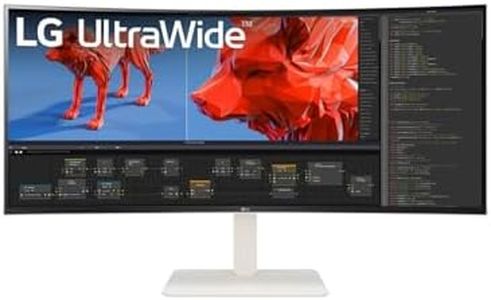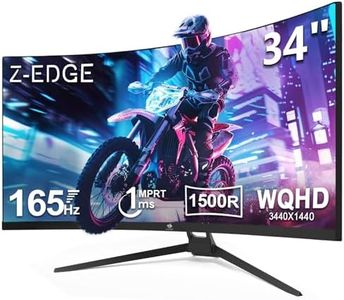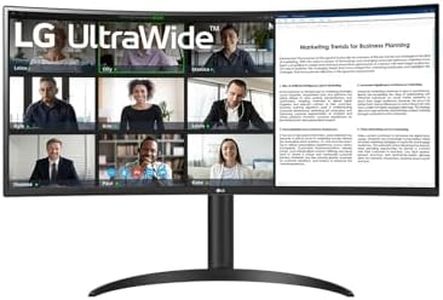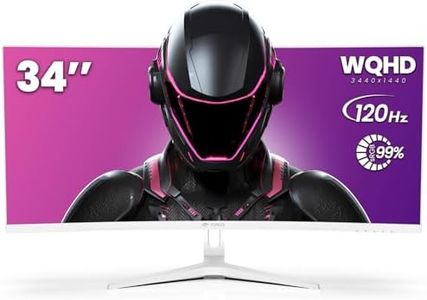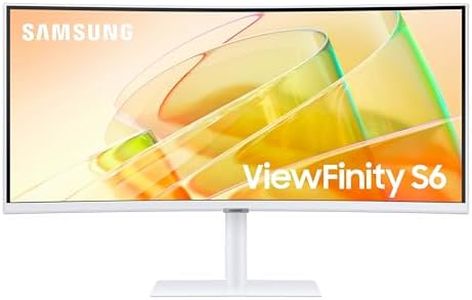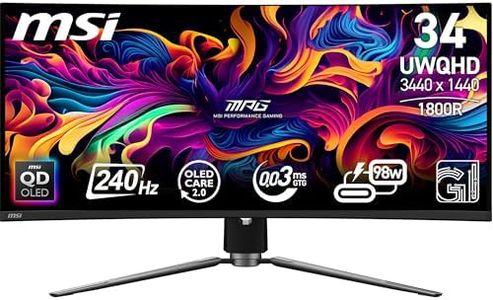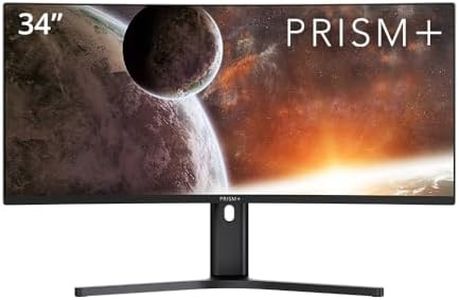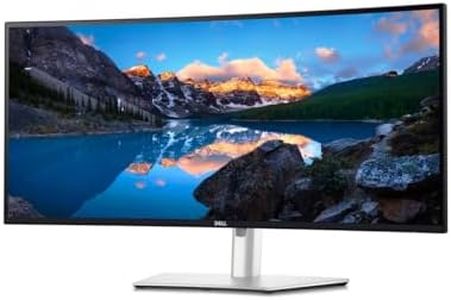We Use CookiesWe use cookies to enhance the security, performance,
functionality and for analytical and promotional activities. By continuing to browse this site you
are agreeing to our privacy policy
10 Best Ultrawide Curved Monitors
From leading brands and best sellers available on the web.Buying Guide for the Best Ultrawide Curved Monitors
When choosing an ultrawide curved monitor, it's important to match the monitor's features to what you plan on using it for—whether that's gaming, productivity, watching movies, or a mix of these tasks. Think about what you want to see on your screen at once and how immersive you want the experience to be. Understanding the key specs will help you select a monitor that not only fits your desk but also your daily needs and habits.Screen SizeScreen size refers to the diagonal measurement of the monitor, usually given in inches. This determines how much actual viewing space you have. Larger screens (34 inches and above) provide a more immersive experience, especially for multitasking and media consumption, while smaller ultrawide monitors (around 29 to 34 inches) offer extra horizontal space without overwhelming your desk. If you want lots of windows side by side or a cinematic feel, go for a bigger size; but if your workspace is tight or you prefer less head-turning, consider a more compact ultrawide.
Aspect RatioAspect ratio defines the shape of your screen, with ultrawide monitors typically using 21:9 or even 32:9 ratios, compared to the traditional 16:9. A higher ratio (like 32:9) has an extra-wide format, almost like having two standard monitors side by side. This is great for multitasking or immersive gaming, but the size can be unwieldy. For regular multitasking or cinemascope movies, 21:9 is usually a balanced choice. Your use case—whether you want the widest possible view or just more space than a standard monitor—will dictate the ratio that's ideal for you.
CurvatureCurvature is measured by the 'R' number (like 1500R or 1800R), which shows how sharply the screen curves. A lower number means a stronger curve. This spec helps make the viewing experience more immersive and comfortable by matching the natural curve of your eyes, especially on wider screens. Stronger curves (like 1000R to 1500R) are great for gaming and deep focus, drawing you into the display, while milder curves (1800R or higher) are suitable for mixed use and less dramatic immersion. Choose a curvature that complements how closely you sit to the monitor and how much immersion you want.
ResolutionResolution is the number of pixels across and down the screen, affecting how sharp and detailed the image appears. Common ultrawide resolutions include 2560x1080, 3440x1440, and 5120x2160. Higher resolutions provide clearer images and make text and graphics look crisp, but they require more powerful hardware. If you want detailed visuals for design work or an ultra-clear gaming experience, aim for higher resolutions; if you're focused more on basic productivity tasks, lower resolutions may be perfectly serviceable and easier on your computer.
Refresh RateRefresh rate, shown in hertz (Hz), tells you how often the screen updates its image each second. Higher refresh rates (like 120Hz or 144Hz) make motion look smoother, which is especially useful for fast-paced gaming. Lower refresh rates (60Hz to 75Hz) are adequate for office and general use. If you're a gamer or want buttery-smooth animations, choose a monitor with a higher refresh rate. For non-gaming tasks, standard refresh rates will meet most needs.
Panel TypePanel type refers to the technology used for the screen display, such as IPS, VA, or OLED. IPS panels generally offer better color accuracy and wide viewing angles, making them ideal for creative work and general use. VA panels typically provide higher contrast and deeper blacks, which suits movie watching and gaming in dim environments. OLED panels offer stunning colors and contrast, but are usually more expensive. Choose the panel type that best fits your main activities—color-sensitive work, everyday tasks, or entertainment.
ConnectivityConnectivity covers the types and number of ports the monitor offers, like HDMI, DisplayPort, USB-C, and audio out. This is important for ensuring compatibility with your PC, laptop, or other devices. More ports (especially newer standards like USB-C with power delivery) offer flexibility for connecting multiple devices or easily docking a laptop. Think about what you'll be plugging into the monitor and make sure the connectivity matches your current and future needs.




